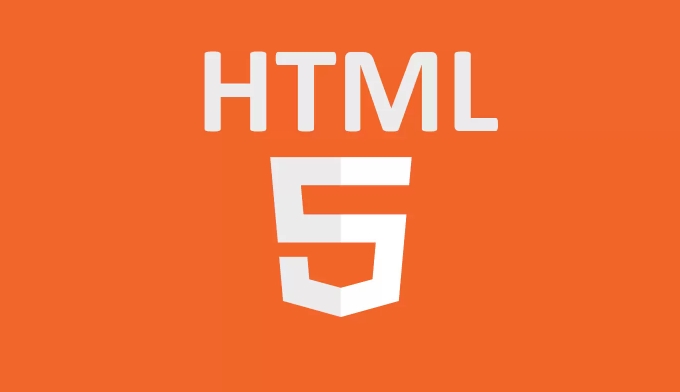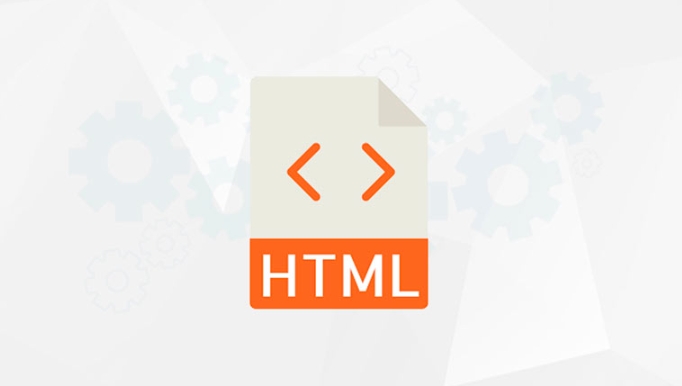To create a responsive picture gallery, the core is to use HTML5 and CSS to achieve adaptation of structure and layout. 1. Use

To be a responsive picture gallery, the core is to enable pictures to automatically adjust layout and size according to the screen size, while maintaining aesthetics and usability. HTML5 itself provides some basic support, but implementing responsiveness depends more on the flexible layout of CSS and media queries.

Structured content using <figure></figure> and <figcaption></figcaption>
HTML5 provides <figure></figure> and <figcaption></figcaption> tags, which are ideal for organizing images and their descriptive text. This not only makes the semantics clear, but also makes it easier to use CSS to control styles later.
For example:

<figure> <img src="/static/imghw/default1.png" data-src="image1.jpg" class="lazy" alt="How to make a responsive image gallery with HTML5?"> <figcaption>Beautiful natural scenery</figcaption> </figure>
This structure is common in picture galleries, especially if you want each picture to have a title or description. Using these tags can also help search engines better understand page content.
Layout the gallery using CSS Grid or Flexbox
To make the picture gallery display well on different devices, it is recommended to use CSS Grid or Flexbox for layout. Both can implement responsive arrangements, where Grid is more suitable for two-dimensional layouts (row and column control), and Flexbox is more suitable for one-dimensional arrangements (such as horizontal or vertical arrangement).

For example, use Grid to implement a responsive three-column layout:
.gallery {
display: grid;
grid-template-columns: repeat(auto-fit, minmax(250px, 1fr));
gap: 1rem;
}The meaning of this code is: automatically adjust the number of columns, each image item has a minimum of 250px, a maximum of one row, and a spacing of 1 rem. This will become single column on the phone, double column on the tablet, three columns on the desktop or even more.
If you are more familiar with Flexbox, you can also write this:
.gallery {
display: flex;
flex-wrap: wrap;
gap: 1rem;
}
.gallery img {
flex: 1 1 calc(33.333% - 1rem);
}However, this method requires manual calculation of width, which is not as flexible as Grid.
The picture itself must be processed responsively
It is not enough to have layout alone, and the picture itself also needs to be responsive. All images can be styled as follows:
img {
width: 100%;
height: auto;
display: block;
}This way the image will scale with the container and will not deform or overflow. If you want to unify the height, you can also add padding or object-fit:
img {
object-fit: cover;
height: 200px;
}This way the picture will be cropped and filled the entire area, making the visual effect more neat.
Also, don't forget to set the alt attribute, which is important for both accessibility and SEO.
Basically that's it. The structure is HTML5 tag, the layout is Grid or Flexbox, and the image controls the width and height and adaptation methods. Not complicated but easily overlooked are details, such as small tips such as gap , minmax and object-fit Master them well and your picture gallery will be both beautiful and practical.
The above is the detailed content of How to make a responsive image gallery with HTML5?. For more information, please follow other related articles on the PHP Chinese website!

Hot AI Tools

Undress AI Tool
Undress images for free

Undresser.AI Undress
AI-powered app for creating realistic nude photos

AI Clothes Remover
Online AI tool for removing clothes from photos.

Clothoff.io
AI clothes remover

Video Face Swap
Swap faces in any video effortlessly with our completely free AI face swap tool!

Hot Article

Hot Tools

Notepad++7.3.1
Easy-to-use and free code editor

SublimeText3 Chinese version
Chinese version, very easy to use

Zend Studio 13.0.1
Powerful PHP integrated development environment

Dreamweaver CS6
Visual web development tools

SublimeText3 Mac version
God-level code editing software (SublimeText3)

Hot Topics
 What is Microdata? HTML5 Explained
Jun 10, 2025 am 12:09 AM
What is Microdata? HTML5 Explained
Jun 10, 2025 am 12:09 AM
MicrodataenhancesSEOandcontentdisplayinsearchresultsbyembeddingstructureddataintoHTML.1)Useitemscope,itemtype,anditempropattributestoaddsemanticmeaning.2)ApplyMicrodatatokeycontentlikebooksorproductsforrichsnippets.3)BalanceusagetoavoidclutteringHTML
 Microdata in HTML5: The Key to Better Search Engine Ranking
Jun 12, 2025 am 10:22 AM
Microdata in HTML5: The Key to Better Search Engine Ranking
Jun 12, 2025 am 10:22 AM
MicrodatasignificantlyimprovesSEObyenhancingsearchengineunderstandingandrankingofwebpages.1)ItaddssemanticmeaningtoHTML,aidingbetterindexing.2)Itenablesrichsnippets,increasingclick-throughrates.3)UsecorrectSchema.orgvocabularyandkeepitupdated.4)Valid
 Audio and Video: HTML5 VS Youtube Embedding
Jun 19, 2025 am 12:51 AM
Audio and Video: HTML5 VS Youtube Embedding
Jun 19, 2025 am 12:51 AM
HTML5isbetterforcontrolandcustomization,whileYouTubeisbetterforeaseandperformance.1)HTML5allowsfortailoreduserexperiencesbutrequiresmanagingcodecsandcompatibility.2)YouTubeofferssimpleembeddingwithoptimizedperformancebutlimitscontroloverappearanceand
 Audio and Video : What about browser compatibility?
Jun 11, 2025 am 12:01 AM
Audio and Video : What about browser compatibility?
Jun 11, 2025 am 12:01 AM
Browser compatibility can ensure that audio and video content works properly in different browsers by using multiple formats and fallback strategies. 1. Use HTML5 audio and video tags and provide multiple format sources such as MP4 and OGG. 2. Consider automatic playback and mute strategies and follow the browser's policies. 3. Handle cross-domain resource sharing (CORS) issues. 4. Optimize performance and use adaptive bit rate streaming media technologies such as HLS.
 Audio and Video: can i record it?
Jun 14, 2025 am 12:15 AM
Audio and Video: can i record it?
Jun 14, 2025 am 12:15 AM
Yes,youcanrecordaudioandvideo.Here'show:1)Foraudio,useasoundcheckscripttofindthequietestspotandtestlevels.2)Forvideo,useOpenCVtomonitorbrightnessandadjustlighting.3)Torecordbothsimultaneously,usethreadinginPythonforsynchronization,oroptforuser-friend
 Adding Audio and Video to HTML: Best Practices and Examples
Jun 13, 2025 am 12:01 AM
Adding Audio and Video to HTML: Best Practices and Examples
Jun 13, 2025 am 12:01 AM
Use and elements to add audio and video to HTML. 1) Use elements to embed audio, make sure to include controls attributes and alternate text. 2) Use elements to embed video, set width and height attributes, and provide multiple video sources to ensure compatibility. 3) Add subtitles to improve accessibility. 4) Optimize performance through adaptive bit rate streaming and delayed loading. 5) Avoid automatic playback unless muted, ensuring user control and a clear interface.
 What is the purpose of the input type='range'?
Jun 23, 2025 am 12:17 AM
What is the purpose of the input type='range'?
Jun 23, 2025 am 12:17 AM
inputtype="range" is used to create a slider control, allowing the user to select a value from a predefined range. 1. It is mainly suitable for scenes where values ??need to be selected intuitively, such as adjusting volume, brightness or scoring systems; 2. The basic structure includes min, max and step attributes, which set the minimum value, maximum value and step size respectively; 3. This value can be obtained and used in real time through JavaScript to improve the interactive experience; 4. It is recommended to display the current value and pay attention to accessibility and browser compatibility issues when using it.
 HTML audio and video: Examples
Jun 19, 2025 am 12:54 AM
HTML audio and video: Examples
Jun 19, 2025 am 12:54 AM
Audio and video elements in HTML can improve the dynamics and user experience of web pages. 1. Embed audio files using elements and realize automatic and loop playback of background music through autoplay and loop properties. 2. Use elements to embed video files, set width and height and controls properties, and provide multiple formats to ensure browser compatibility.






